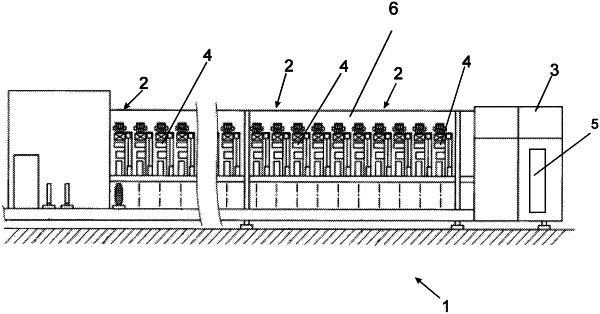| CPC D01H 13/32 (2013.01) [D01H 4/42 (2013.01); D01H 13/26 (2013.01)] | 11 Claims |

|
1. A method for monitoring a textile machine having one workstation or a plurality of workstations in which method different production figures of the individual workstations are captured, at least one selectable production figure is checked for exceeding a specified limit value and subsequently a result of the check is optically indicated,
characterised in that
a plurality of lighting strips are associated with the individual workstations and are arranged on a textile machine control unit and/or the one workstation or the plurality of workstations and at which the result of the check of the at least one selected production figure to be checked for exceeding the specified limit value is indicated by different light signals, wherein the textile machine has a service unit capable of being moved along the workstations, for automatically detecting workstations in need of maintenance and automatically performing maintenance work,
wherein the lighting strips are arranged at the workstations in such a way and that the light signals are produced at said lighting strips in such a way that an optical detection device of the service unit automatically detects workstations in need of maintenance and/or alignment relative to the workstation by using said light signals, and
characterised in that the textile machine has a plurality of spinning positions, and
characterised in that the textile machine control unit captures efficiencies of the plurality of spinning positions at predefined intervals after a defined observation period.
|